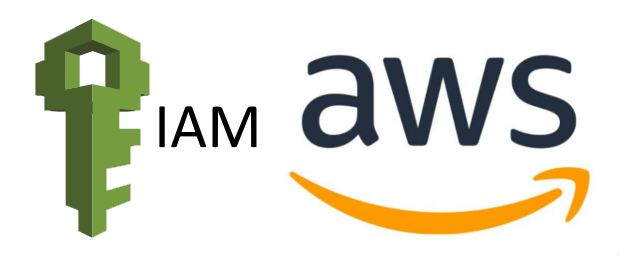
Mastering AWS Identity and Access Management (IAM): Securing Your Cloud Resources
In the ever-evolving landscape of cybersecurity, organizations are constantly seeking innovative solutions to stay ahead of sophisticated threats. The emergence of Managed Extended Detection and Response (MXDR) platforms has revolutionized the way businesses approach cybersecurity. By leveraging artificial intelligence (AI) and advanced risk quantification techniques, MXDR platforms provide organizations with unparalleled visibility, threat detection, and risk management capabilities. In this blog post, we will explore how MXDR platforms are transforming cybersecurity and empowering organizations to make data-driven decisions to mitigate risks effectively.
Understanding IAM
AWS IAM is a web service that enables you to manage users, roles, and permissions for your AWS resources. It allows you to create and manage AWS users and groups, assign permissions to allow or deny access to specific AWS services and resources, and provide temporary access to users and services as needed. IAM is a critical component of AWS security, and it is essential to understand its concepts and best practices to effectively secure your cloud environment.IAM Users and Groups
IAM Users represent individuals or applications that interact with your AWS resources. Each IAM User is associated with a unique set of security credentials, such as an access key ID and secret access key. These credentials are used to authenticate and authorize access to AWS services and resources. IAM Groups are collections of IAM Users, making it easier to manage permissions for multiple users with similar access requirements. By organizing users into groups, you can simplify permission management and ensure consistent access control across your organization.IAM Roles
IAM Roles are a powerful feature that allows you to grant permissions to AWS services and applications without the need for long-term access keys. Instead of creating and managing individual IAM Users for each service or application, you can create an IAM Role and assign permissions to it. Services and applications can then assume the role and inherit the associated permissions. This approach provides a more secure and manageable way to grant access to AWS resources, as you can easily revoke or modify permissions by updating the IAM Role.
#Here's an example of how to create an IAM Role using the AWS SDK for Python (Boto3):
import boto3
iam = boto3.client('iam')
role_name = 'MyApplicationRole'
assume_role_policy_document = {
"Version": "2012-10-17",
"Statement": [
{
"Effect": "Allow",
"Principal": {
"Service": "ec2.amazonaws.com"
},
"Action": "sts:AssumeRole"
}
]
}
response = iam.create_role(
RoleName=role_name,
AssumeRolePolicyDocument=json.dumps(assume_role_policy_document)
)
print(f"IAM Role created: {response['Role']['RoleName']}")
IAM Policies
IAM Policies are JSON documents that define permissions for IAM Users, Groups, and Roles. They specify which actions are allowed or denied on specific AWS resources. IAM Policies can be attached to IAM Users, Groups, or Roles, granting or restricting access to AWS services and resources. AWS provides a wide range of predefined managed policies, such as "AmazonS3FullAccess" or "AmazonEC2ReadOnlyAccess," which you can use directly or customize to fit your specific security requirements.
#Here's an example of an IAM Policy that allows read-only access to an Amazon S3 bucket:
{
"Version": "2012-10-17",
"Statement": [
{
"Effect": "Allow",
"Action": [
"s3:GetObject",
"s3:ListBucket"
],
"Resource": [
"arn:aws:s3:::my-bucket",
"arn:aws:s3:::my-bucket/*"
]
}
]
}
Least Privilege Access
Granting excessive permissions to users and roles can lead to security breaches and unauthorized access to sensitive resources. To mitigate this risk, adopt the principle of least privilege access, where users and roles are granted only the minimum permissions necessary to perform their tasks. This approach ensures that even if an account is compromised, the attacker's access is limited to the specific resources and actions allowed by the assigned permissions.Enable Multi-Factor Authentication (MFA)
Multi-Factor Authentication adds an extra layer of security to the authentication process, making it more difficult for attackers to gain unauthorized access to AWS resources. Enforce MFA for all IAM users, especially those with administrative privileges, to ensure that even if an attacker obtains a user's password, they will still be unable to access the account without the second factor.
#Here's an example of how to enforce MFA for an IAM User using the AWS SDK for Python (Boto3):
import boto3
iam = boto3.client('iam')
user_name = 'MyUser'
mfa_serial = 'arn:aws:iam::123456789012:mfa/MyUser'
response = iam.create_login_profile(
UserName=user_name,
Password='MyStrongPassword123',
PasswordResetRequired=True
)
response = iam.enable_mfa_device(
UserName=user_name,
SerialNumber=mfa_serial,
AuthenticationCode1='123456',
AuthenticationCode2='654321'
)
print(f"MFA enabled for IAM User: {user_name}")
Regularly Review and Audit IAM Policies
IAM policies are subject to change over time, and it's essential to regularly review and audit them to ensure they align with your security requirements. This process helps identify and remove unnecessary permissions, reducing the risk of security breaches.

AWS Identity and Access Management (IAM) is a powerful service that enables you to secure your AWS resources by managing access permissions for users, groups, and roles. By understanding IAM concepts, utilizing IAM Roles and Policies effectively, and following best practices, you can establish a robust security framework for your cloud environment. Remember to regularly review and audit your IAM configuration to ensure it aligns with your evolving security requirements. With IAM, you can confidently build and deploy applications on AWS while maintaining a strong security posture.
SMIIT







.jpg)
